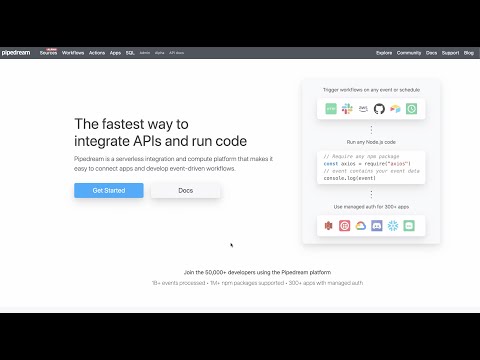What do you want to automate
with Splunk HTTP Event Collector and PagerDuty?
Prompt, edit and deploy AI agents that connect to Splunk HTTP Event Collector, PagerDuty and 2,500+ other apps in seconds.
Trusted by 1,000,000+ developers from startups to Fortune 500 companies
Popular Ways to Connect Splunk HTTP Event Collector with PagerDuty#
Popular Splunk HTTP Event Collector and PagerDuty Actions#
Checks the health status of the Splunk HTTP Event Collector to ensure it is available and ready to receive events. See the documentation
Sends multiple events in a single request to the Splunk HTTP Event Collector. See the documentation
Find the user on call for a specific schedule. See the docs here
Sends an event to Splunk HTTP Event Collector. See the documentation
Connect Splunk HTTP Event Collector#
import { axios } from "@pipedream/platform"
export default defineComponent({
props: {
splunk_http_event_collector: {
type: "app",
app: "splunk_http_event_collector",
}
},
async run({steps, $}) {
const data = {
"event": `Hello world!`,
"sourcetype": `manual`,
}
return await axios($, {
method: "post",
url: `${this.splunk_http_event_collector.$auth.api_url}:${this.splunk_http_event_collector.$auth.port}/services/collector`,
headers: {
"authorization": `Splunk ${this.splunk_http_event_collector.$auth.api_token}`,
},
params: {
channel: `2AC79941-CB26-421C-8826-F57AE23E9702`,
},
data,
})
},
})
Overview of PagerDuty#
The PagerDuty API offers a powerful interface to automate your digital operations management. By leveraging its capabilities on Pipedream, you can create workflows that respond to incidents, automate alerts, and synchronize incident data across various platforms. PagerDuty's API enables you to manage services, teams, and incidents, ensuring that your systems remain operational and that the right people are notified at the right time.
Connect PagerDuty#
import { axios } from "@pipedream/platform"
export default defineComponent({
props: {
pagerduty: {
type: "app",
app: "pagerduty",
}
},
async run({steps, $}) {
return await axios($, {
url: `https://api.pagerduty.com/users/me`,
headers: {
Authorization: `Bearer ${this.pagerduty.$auth.oauth_access_token}`,
"Accept": `application/vnd.pagerduty+json;version=2`,
},
})
},
})
Related Videos#
